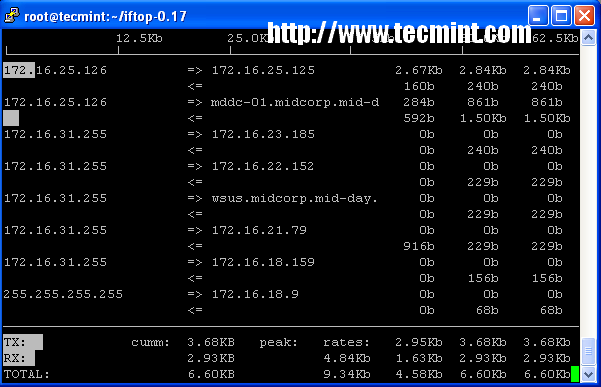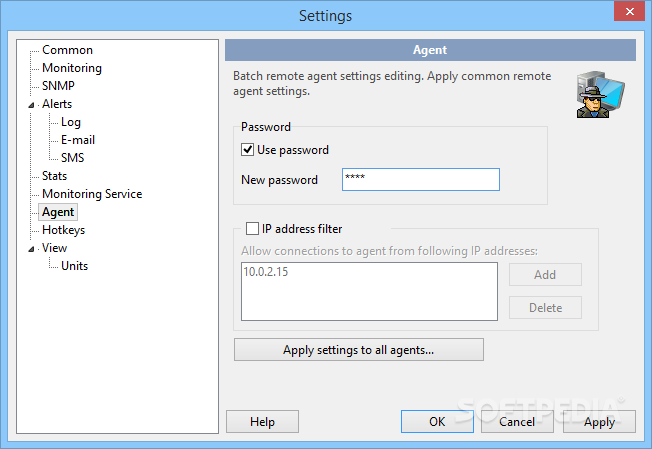How much bandwidth and data are the devices on your network using? Bandwidth hogs can slow down your entire network, and per-device data usage is important if your Internet service provider imposes a bandwidth cap.
Network Meter is an advanced network desktop gadget for Windows. It shows your SSID (Service Set Identifier), signal strength, internal and external IP addresses, blacklisted IP ratio, IP lookup with Google Maps, Internet speed (upload and download), firewall check, remaining data (quota, usage, and day), total data usage, and whether your connection is secure. Best Free Bandwidth Monitoring Software and Tools to Analyze Network Traffic Usage Published by John Kimball on June 15, 2018 in Net Admin To keep an eye on the health of your network and diagnose problems that crop up, an essential activity is network traffic monitoring: monitoring and analyzing your traffic to know your network performance and which traffic is consuming your bandwidth. Our Bandwidth Monitoring Software. Among the many functions of our cloud-based software is the ability to closely and remotely monitor the bandwidth of network users. This ability extends to: Remote monitoring.Take advantage of the cloud-based structure of our software to keep tabs on your clients' bandwidth levels from afar and take immediate action. Solved Tools for Monitoring Network Bandwidth Usage solved looking for network monitoring tool for Windows machine Looking for a network traffic monitoring tool. GFI Software offers award-winning IT management software and hosted services for network, email and web security.
Unfortunately, it’s tough to get a complete picture of your bandwidth and data usage on a normal home network. Your best best is a custom router firmware — but there are options even if you don’t want to use one of those.

Monitor Bandwidth and Data Usage on Your Router
RELATED:How to Use a Custom Firmware on Your Router and Why You Might Want To
The most accurate way to monitor this would be on your router itself. All the devices on your network connect to the Internet through your router, so this is the single point where bandwidth usage and data transfers can be monitored and logged.
This isn’t as easy as it should be. Most home routers don’t even include the ability to see which devices are using which amount of bandwidth at the moment, much less a history of how much data they’ve downloaded and uploaded this month. Some higher-end routers do offer the ability to keep track of how much data you’ve uploaded and downloaded each month, but they don’t necessarily offer per-device bandwidth status-viewing or a per-device data usage history.
Instead, you’ll need to depend on third-party router firmwares for this. Router firmwares like DD-WRT offer the ability to see live bandwidth usage, and you can check which devices are currently using the most data. This will let you pinpoint any devices hogging bandwidth at that very moment.
Monitoring data usage over an extended period of time is harder. The My Page add-on for DD-WRT does this well, although it will require additional storage on your router to continue logging all this data over time — a device plugged into USB storage, for example.
https://communicationgol341.netlify.app/free-erd-tool-for-mac.html. Getting a DD-WRT router so you can use this feature isn’t as hard as it might sound. For example, Buffalo offers routers that come with DD-WRT preinstalled, while Asus touts DD-WRT compatibility for their line of routers.
https://ninmgmt.netlify.app/solarwinds-network-tool-for-mac.html. Remote network MAC scanner Need to know the MAC addresses of devices connected to remote subnets? Run the MAC address discovery tool on a laptop that can plug into the remote subnet to search for MAC addresses on the network.
There’s also Gargoyle, an OpenWRT-based router firmware designed specifically for bandwidth and data usage monitoring. It can also enforce quotas on specific devices to prevent them from downloading and uploading too much data.
There’s a wrtbwmon script designed for routers running Linux-based firmwares like DD-WRT, OpenWRT, and Tomato. However, this script writes this information to a database which means you need to provide a separate database it can connect to over the network to log this information — it can’t do all the work on the router itself. It’s no longer under active development, but the author recommends a few forks of the Tomato router firmware that include features based on it. OpenWRT users can use luci-wrtbwmon, which makes things a little simpler.
Monitor on the Individual Devices
There’s no magic way to run a tool that somehow monitors all the traffic on your network without your router’s help. This information must be captured on your router itself. If you can’t actually capture or view this information on your router, you’re left relying on bandwidth-monitoring tools built into each device itself.
This is more complicated than it seems, too. You can’t just use a single method, as you could have Windows PCs, Macs, Android phones, iPhones and iPads, game consoles, smart TVs, and set-top streaming boxes all connected to your home router. Worse yet, many of these devices — laptops, smartphones, and tablets — won’t only use data on your home network. So you can’t even rely on a data usage meter that shows how much data you’ve downloaded on your laptop, as some of that will have taken place outside of your home on a different Wi-Fi network.
Different operating systems do have different tools that can help. Mac remote management. GlassWire is a free and polished network-monitoring tool that will track data usage on all versions of Windows. On Windows 10 and 8, you could also set a specific connection as a “metered” connection and Windows will track data usage for it. This will change how Windows and some applications use the connection, however.
Macs can use Bandwidth+ from the Mac App Store. If the majority of your bandwidth usage takes place on a few computers, this will give you a decent overview of which ones are using the most data.

Android’s built-in data-usage monitor may allow you to monitor your Wi-Fi data usage, but not for a specific network — just all Wi-FI data. iPhones and iPads only allow you to monitor cellular data usage. You’ll need third-party apps for these devices to keep track of how much data you’re using on Wi-Fi.

The only way to get a complete picture is to monitor the data usage from your router. If you can’t do that but want to get some idea of which devices are using the most data, installing some of the above tools on your computers will help. But some devices won’t allow you to install apps that can help monitor this — game consoles and other devices that stream media from the Internet to your TV, for example.
If this is really important to you, your only real option is setting up a router with a custom router firmware and using a bandwidth-monitoring and data-usage-logging tool on it.
Image Credit: Timo Kuusela on Flickr
Network Tool For Mac To Monitor Network Bandwidth Usage
READ NEXTModding Tool For Mac To Use On 360
- › What Can I Do with My Old iPhone?
- › How to Stream UFC 242 Khabib vs. Poirier Live Online
- › Free Download: Microsoft’s PowerToys for Windows 10
- › How to Overclock Your Computer’s RAM
- › What’s New in Chrome 77, Arriving September 10